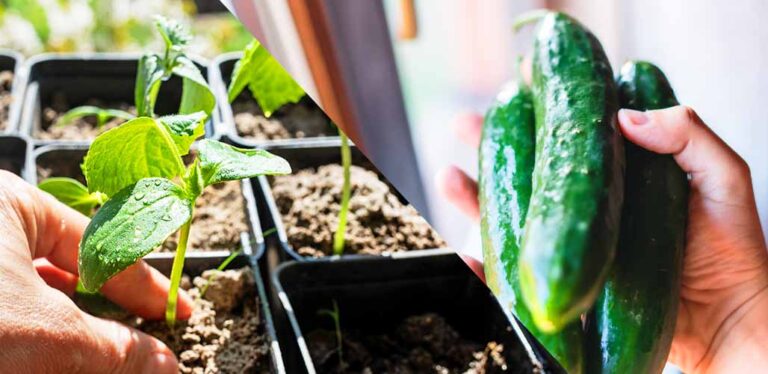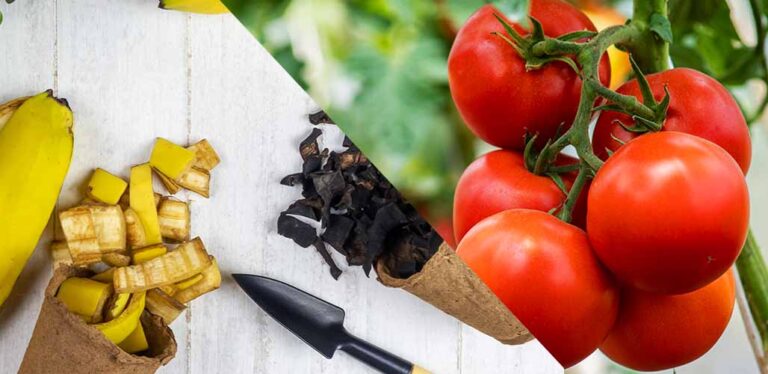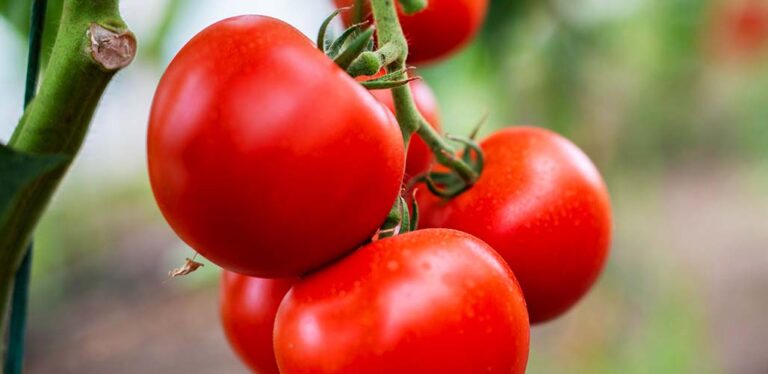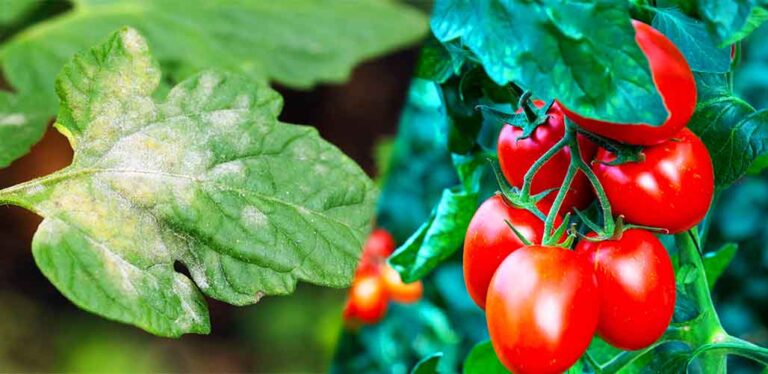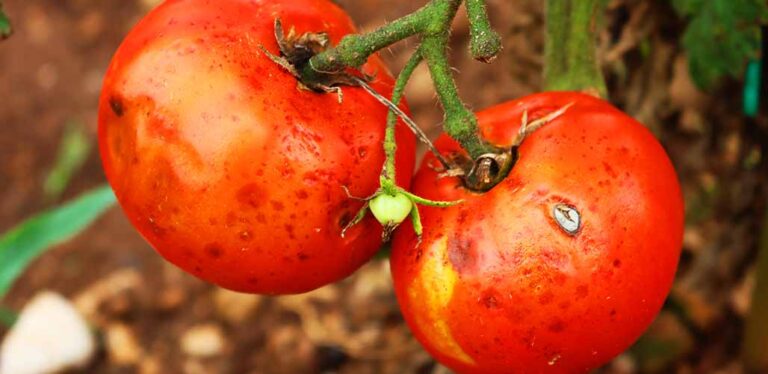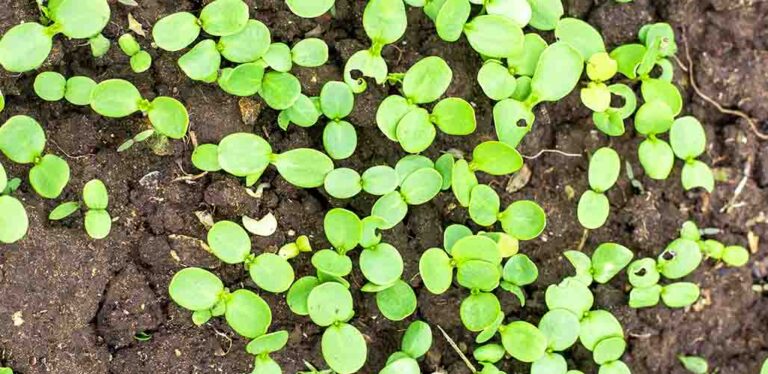11 Tomato Pruning Mistakes And How To Avoid Them
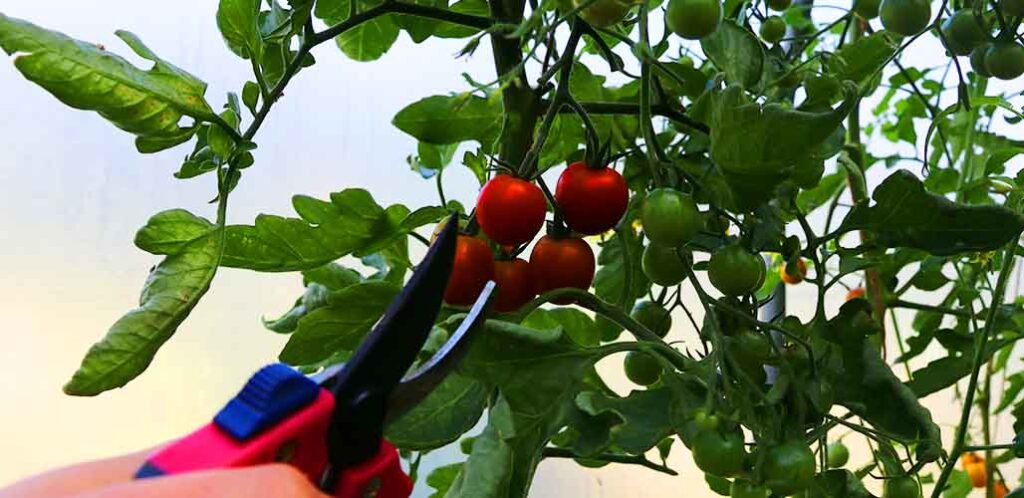
Tomato pruning mistakes are easily made, and they can dramatically affect the number of ripe tomatoes you get to harvest later in the season. Pruning tomatoes correctly is straightforward and only takes a few seconds per plant, per day. But even when you’re an experienced tomato grower, an absent minded slip of the pruners can happen. Here are the simple rules of tomato pruning, the most common mistakes people make, and how to avoid them and even come back from them.
Contents
If you’d like to skip straight to diagnosing a tomato pruning mistake, here’s a list of the possibilities which will take you straight to more information about each one:
- Pruning determinate varieties
- Not pruning indeterminate varieties
- Using dirty or blunt tools
- Leaving the lowest leaves touching the ground
- Forgetting to pinch out side shoots
- Leaving discolored or dying leaves on a plant
- Removing the growing tip too soon
- Keeping too many trusses
- Treating your indoor and outdoor tomatoes the same
- Forgetting to keep a couple of leaves above the last truss
- Keeping leaves on the vine after their work is done
How to prune tomatoes
The purpose of pruning tomatoes is to make them channel as much energy as possible into making fruit. Effective pruning stops your tomato vines expending any more energy than absolutely necessary on producing foliage instead of fruit, and provides protection against some of the growing problems that can wipe out your crop altogether. The simple rules for pruning tomatoes are:
- Check whether you’re growing an indeterminate (cordon) variety, or a determinate (bushy) variety. Only pick up the pruners in the first place if you’re growing an indeterminate variety.
- When you transplant your tomato seedlings, prune off any leaves which touch the soil.
- As your vine grows, pinch out the side shoots that sprout where a leaf joins the main stem.
- Pinch off the growing tip from the top of the plant when your tomato vine reaches the top of its support, or the roof of your greenhouse, or it has produced 4 or 5 trusses of flowers.
- Once you’ve started harvesting your tomatoes, every time a truss is finished, remove all the leaves left below it.
- Remove yellow leaves, sun scorched leaves, diseased leaves and suckers growing up from soil level on a continuous basis.
Once you know what you’re doing, pruning tomato plants is easily done at the same time as feeding and watering them, and only takes a matter of moments.
Common tomato pruning mistakes
Pruning tomatoes is simple when you know how, and even more intuitive once you’ve grown a tomato crop from start to finish for the first time, and seen how the pruning helps achieve bigger harvests. Here are pruning mistakes novice tomato growers – and occasionally those of us who should know better! – most often make.
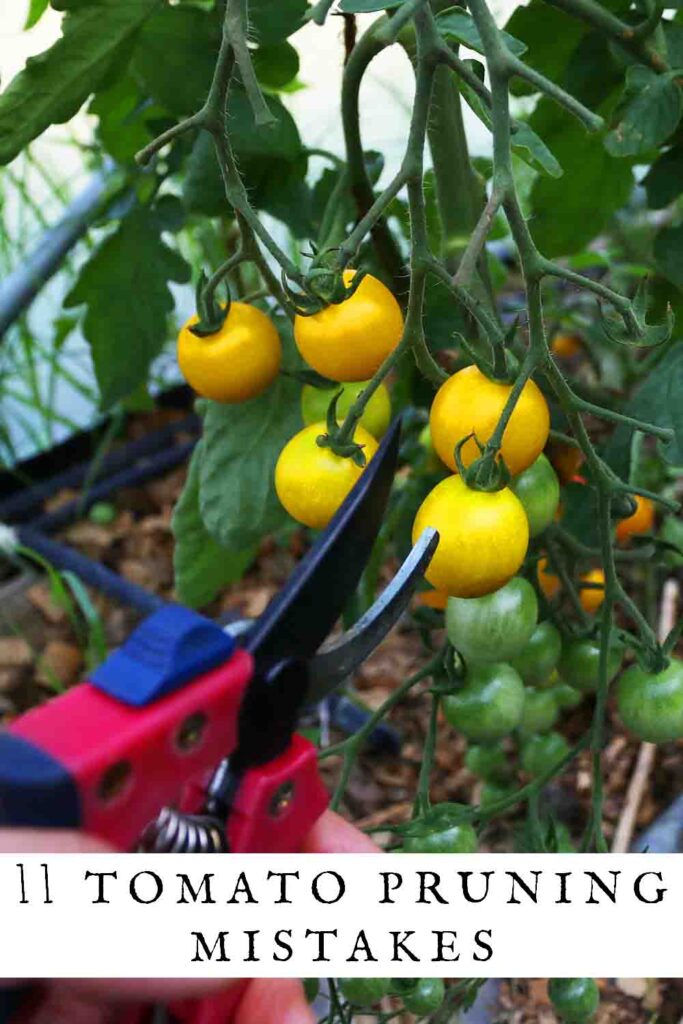
1. Pruning determinate varieties
The biggest tomato pruning mistake you can make is pruning a bushy, or determinate variety. Bushy tomatoes are self limiting in size, and they produce fruit on a multitude of stems. Pinching out the side shoots from a bushy tomato plant is simply robbing your future self of all the fruit that would have been borne on those stems! You will be amazed how many experienced growers also make this mistake though. And it’s almost always because they’ve grown a mix of determinate and indeterminate varieties, and not labeled their seed trays and seedlings properly. Always, always use labels!!
2. Not pruning indeterminate varieties
Of course, the corresponding tomato pruning mistake is not pruning indeterminate tomatoes. Indeterminate tomato vines (a.k.a. cordon varieties) keep growing until the frosts kill them in fall. Their main stem keeps elongating from the tip, and every leaf joint along its length will produce a side shoot where it meets the main stem. Left unpruned, indeterminate tomatoes produce masses of foliage, and relatively few fruits. Which is fine if you’re a tomato plant trying to leave behind some seeds for next year, but disappointing if you’re a person trying to achieve a worthwhile crop. Pruning away the side shoots forces your plant to focus on producing fruit on its main stem. Eventually taking the tip off the main stem too maximises the number of fruits which will achieve full ripeness before the growing season ends.
3. Using dirty or blunt tools
Before we even get into tomato pruning mistakes that involve actual pruning decisions, picking a blunt or dirty pair of pruners is also a big no-no. Dirty tools can carry infectious fungal, viral and bacterial diseases from one plant to another. For example cankers, mosaic viruses, and wilts. Using blunt tools can also crush the stems rather than severing them cleanly, meaning they take longer to heal. In that time, airborne diseases like blight will have more opportunity to take hold.
4. Leaving the lowest leaves touching the ground
Tomato pruning starts as soon as you plant them out in their final location. Once you have firmed in the soil around them and watered it, snip off any leaves which are touching the ground. This will create space for air to circulate around the base of the plant, and reduce the risk of your vine being attacked by fungal and bacterial infections. This is the one type of pruning you can carry out on bushy tomatoes too.
5. Forgetting to pinch out side shoots
Leaving side shoots on cordon tomatoes is a pruning error because it forces your plant to start spreading its energy out across more stems and more foliage. This reduces how many fruits can ripen, and their mature size. When you remove side shoots, the vine will concentrate all their energy into producing large fruits on its main stem instead. Overlooking a sneaky side shoot is a common tomato pruning mistake though. Even with daily checks I’ve sometimes found side shoots on my vines that had managed to grow over a foot long unnoticed!
TOP TIP: Don’t throw away your tomato side shoots – propagate them in water to get more plants instead!
6. Leaving discolored or dying leaves on a plant
When tomato leaves turn white or yellow, or die back, they stop serving the plant, and become a drain on the energy produced by the remaining healthy leaves. It’s a pruning mistake not to nip off dead or discolored leaves, especially those without any flower trusses beneath them.
7. Removing the growing tip too soon
A tomato pruning mistake many growers will be familiar with is inadvertently taking the growing tip of a tomato plant instead of the side shoot next to it. Or accidently snapping the growing tip whilst transplanting a seedling into its finally growing spot. If you don’t have any back up plants to use instead, don’t panic. You can still save your harvests by leaving a side shoot in place and letting it take over as the new main stem. Try to choose one sprouting from as close to the base of the plant as possible, so that it will still have plenty of room for setting flowers and fruit.
8. Keeping too many trusses
It’s easy to get greedy when your tomato plant starts setting flower trusses. Each truss represents so much potential for harvests later on! But letting too many trusses set before removing the growing tip from your vine is a pruning mistake which makes it less likely all your fruit will ripen before end of the year. It’s better to limit your plant to five trusses and get ripe fruit off all of them, than keep eight trusses and only get ripe fruit from three.
9. Treating your indoor and outdoor tomatoes the same
Depending on your region, you might only be able to grow your tomatoes only in a greenhouse or only outside. In some places though, it’s possible to make use of both spaces. Usually when this is the case, the vines grown under glass will outperform the vines grown outside. The greenhouse protects them from difficult growing conditions like high winds, and traps warm air around them at night. This means that greenhouse tomato plants can sometimes sustain as many as 6 to 8 trusses of tomatoes. Whereas outdoor tomatoes should be limited to 4 or 5 trusses.
10. Forgetting to keep a couple of leaves above the last truss
Tomato plants ripen their fruit by sending energy down them from the leaves above them. So another common pruning mistake is removing the growing tip from a tomato vine immediately above the point where the fourth or fifth flower truss meets the main stem. But this is going to make it difficult for the fruit on that top truss to ripen. So always count a couple more leaves above the top flower stem before you pinch out the growing tip. In fact this year I then lost those top two leaves to sun scorch as well, and I wish I’d left three or four leaves instead! If your greenhouse gets hot in the middle of the day, keep this in mind.
11. Keeping leaves on the vine after their work is done
Since the energy to ripen tomatoes travels down the vine from the leaves above the fruit, our final tomato pruning mistake is keeping too many leaves that aren’t serving the ripening fruit. When your first fruit truss sets, provided there are several leaves above it, you can remove all the leaves from below it with a clean, sharp pair of scissors or pruners. This has the added benefit of promoting air circulation around the base of the plant, and reducing the risk of fungal infections in the soil moving up into the plants. When all the fruits from a truss have been harvested, you can also remove the rest of the leaves from below it. Towards the close of summer, this helps ripen as many fruit as possible before the growing season ends, by forcing the plant to put more of its energy into fruit than maintaining leaves.
Tomato pruning mistakes – summary
Most tomato pruning mistakes involve removing growth that tomatoes could eventually grow on, or leaving in place too much growth that drains energy away from setting an ripening fruit. Some mistakes are easy to come back from, whilst others will have an unavoidable effect on your harvest. But, you’ll be certain not to repeat them again next year!
Let us know what pruning mistakes you have made in the comments box down below, and don’t miss our guide to another common growing mistake – growing tomatoes in conditions which are too hot, and ending up with mealy fruits.

